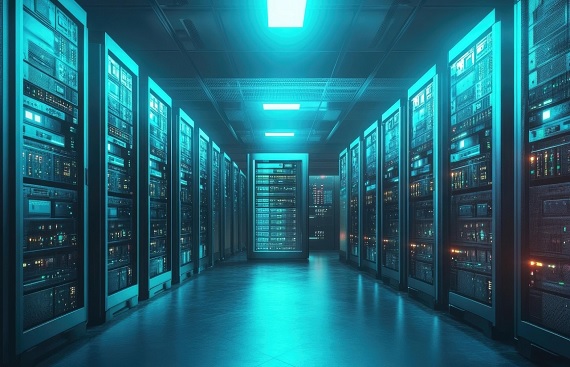India's Edge Data Centre Capacity Set to Triple to 210 MW by 2027: ICRA
By
siliconindia | Saturday, 26 July 2025, 10:34 Hrs

- India’s edge data centre capacity is projected to triple from 60–70 MW in 2024 to 200–210 MW by 2027, driven by rising demand for real-time data processing.
- Higher rentals and capex for edge data centres are expected, especially in Tier II and III cities, creating new opportunities in the commercial real estate sector.
- Edge and traditional data centres will operate in a hub-and-spoke model, supporting sectors like healthcare, banking, and manufacturing with increased need for decentralised infrastructure.
India’s edge data centre capacity is projected to witness a threefold surge, reaching 200–210 Megawatts (MW) by 2027, up from 60–70 MW in 2024, according to a report released by credit rating agency ICRA. The rapid expansion is attributed to the growing adoption of emerging technologies and the increasing demand for real-time data processing.
Edge data centres, smaller in size and strategically located closer to end-users, offer decentralised and low-latency data processing. Unlike traditional, centralised data centres that handle bulk data workloads, edge data centres provide critical support for applications requiring immediate computing, such as IoT, AI, autonomous vehicles, and real-time analytics.
Globally, the data centre industry stood at around 50 Gigawatts (GW) as of December 2024. Edge data centres comprise approximately 10% of this capacity. The United States leads the global edge data centre market, accounting for over 44% of the share, followed by Europe, the Middle East, and Africa (EMEA) at 32%, and the Asia-Pacific (APAC) region at 24%. India currently holds a modest share, with edge data centres forming about 5% of its overall data centre capacity and just 1% excluding captive edge deployments by large operators.
“Edge data centres differ from traditional data centres in several aspects such as location, scale, build time, capex cost per MW, and proximity to the end user”, explained Anupama Reddy, Vice President and Co-Group Head, Corporate Ratings, ICRA. She emphasised that in India, edge and traditional data centres act as complementary infrastructure pillars and are expected to follow a hub-and-spoke operational model.
“With India’s growing digital economy and cloud ecosystem, traditional data centres will continue to handle mass-scale computing, AI, and cloud workloads, while edge data centres will enable real-time processing and localised services across sectors like healthcare, banking, agriculture, Defence, and manufacturing”, Reddy added.
Despite the optimistic outlook, edge data centres face certain challenges, especially due to their deployment in tier II and III cities. These include potential security vulnerabilities, rapid technological advancements that can lead to quick obsolescence, a shortage of skilled professionals in remote areas, and difficulties in integrating with traditional data centre infrastructure.
Moreover, the capex per MW for edge data centres is relatively higher compared to traditional ones. However, this is expected to be balanced by higher rental yields, as edge centres will largely serve retail customers instead of enterprise or hyperscale clients. As per ICRA, the rental structures for edge centres will reflect the premium for proximity, speed, and service reliability.
Also Read: Is There a Need for Scaling Up Data Centers?
Reddy further noted that major data centre players and public sector entities such as RailTel and telecom operators are poised to play a pivotal role in driving edge data centre expansion in India.
As the nation advances towards a more connected future, edge data centres are set to be a crucial enabler for bridging digital divides and supporting India's digital infrastructure ambitions.
